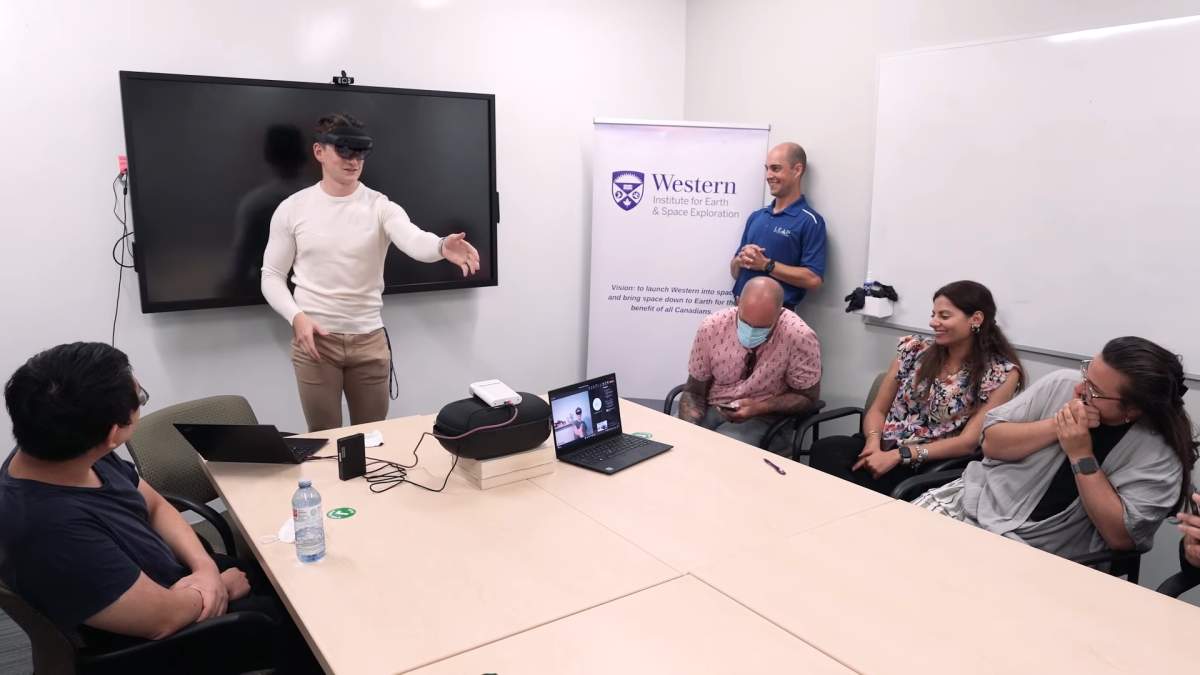Officials with Western University are marking the successful completion of what’s being dubbed the first demonstration of an international, two-way “holographic teleportation.”

Using a special camera and a HoloLens, a mixed reality smartglass headset developed by Microsoft, Western says a small group of students were able to “teleport” via hologram instantaneously to Alabama on July 27.
Participants on the Alabama end of the holographic call included officials from Houston-based Aexa Aerospace, who partnered with Western and developed software used in the demonstration.
“We transported one person from Alabama to London, Ont., and then each of the students here on the project were able to instantly holoport themselves in holographic form down to Huntsville, Ala.,” said Western’s Dr. Adam Sirek, who led the project.
Sirek is also co-founder of Halifax-based Leap Biosystems, which partnered with Aexa and Western to explore potential medical applications for the developing technology.
According to a release from Western, a special camera creates a holographic image of the subject, which is then sent via the internet to the HoloLens of a participant at the chosen destination, in this case Alabama.

Get breaking National news
“The user on the other end is wearing a device called a HoloLens, not unlike virtual reality gaming headsets. Through the HoloLens, the individual can see the subject within their environment,” the release said.
“If both are wearing a HoloLens, they can interact in their environments as if they are actually there.”
Western says its team of faculty, medical students and undergraduates, plan to explore how the technology may be used in the real world and in medical settings — for example providing health care to those in remote and rural settings.
Costing around $5,000, the technology could potentially be used as a less expensive alternative to medivacs and travelling to and from exams, Sirek noted.
The Western team will also look at the possibility of integrating biosensors to the HoloLens, such as heart rate and oxygen saturation monitoring, along with haptics to provide touch feedback.
Microsoft first unveiled its HoloLens in 2015 and released its successor, HoloLens 2, in 2019.









Comments